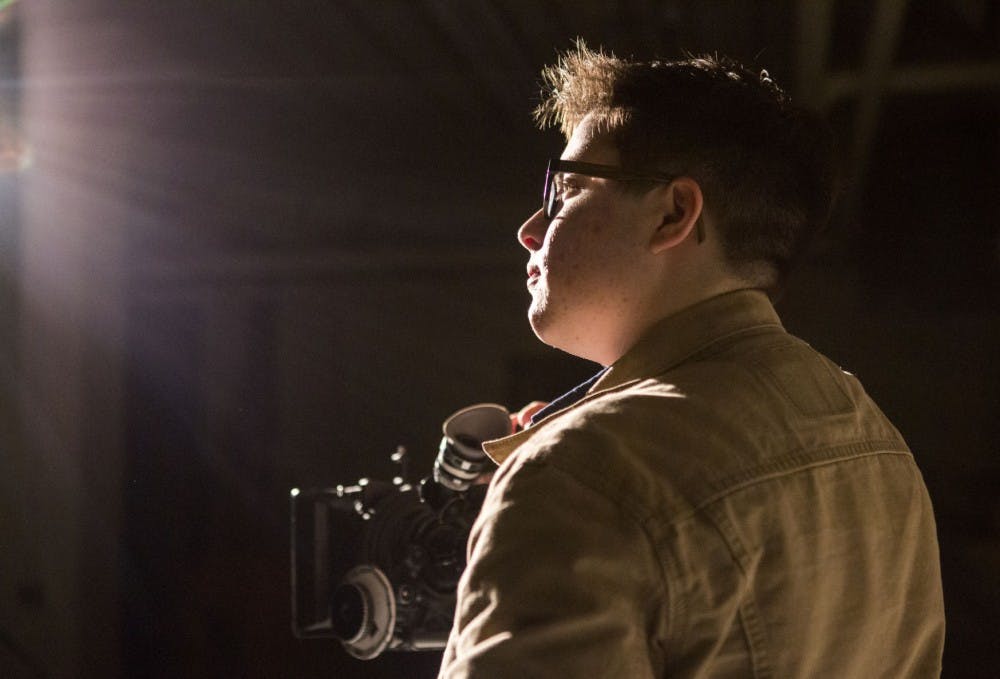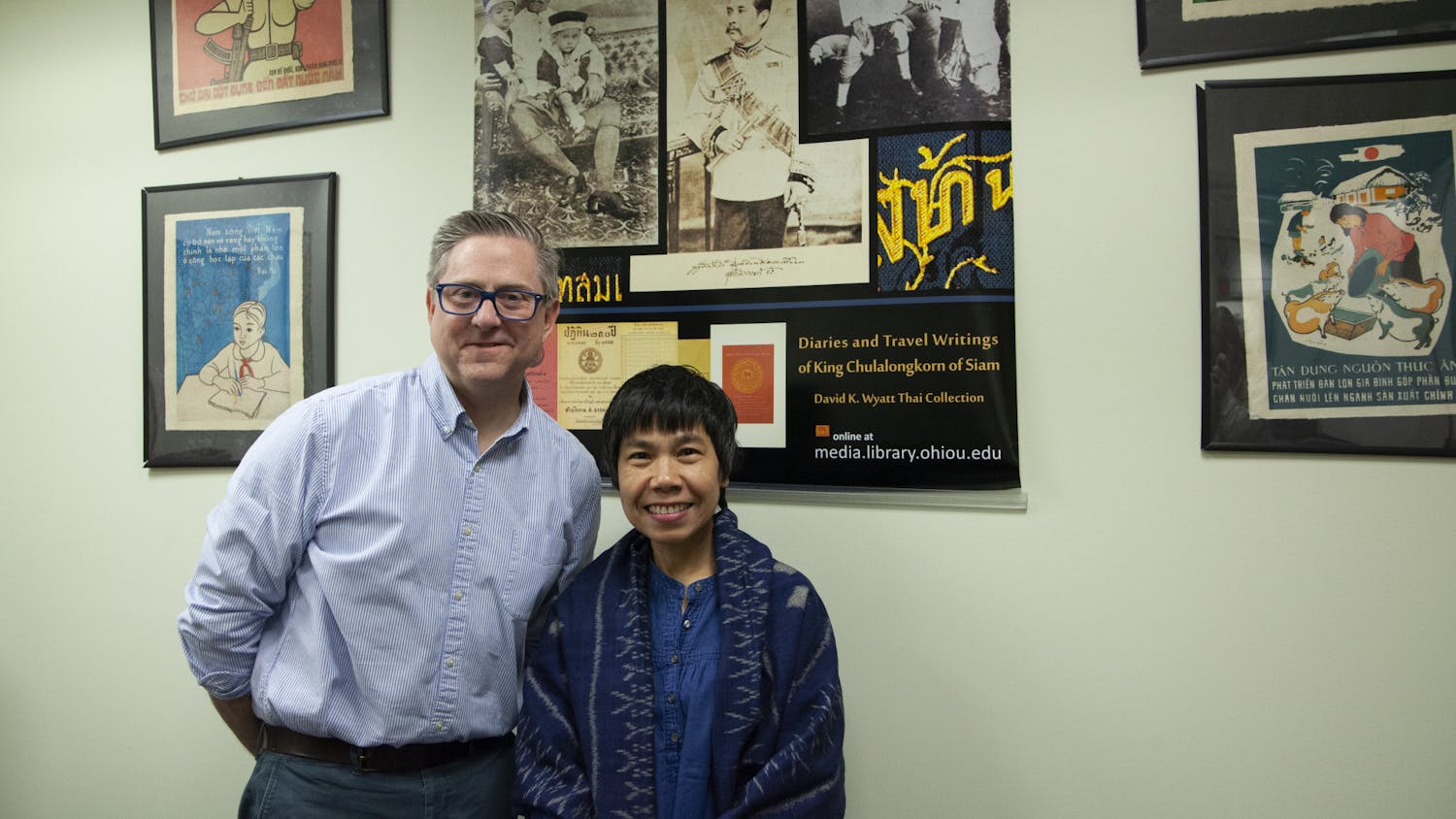Though the transgender community sees progress in the representation of their narratives, stereotypes remain, and an unfair standard is set.
Growing up, Patrick Local never saw a reflection of himself in the media. Without a knowledge of trans existence, he struggled to identify himself.
“Some children can look into the mirror and say, ‘I’m a boy. I know this,’ ” Local said. “For me, I had to see something to identify with, and I didn’t see that in real life or on television.”
The lack of representation played a role in the delay of his transition.
Finally, late in high school, he saw the representation he was waiting for through his sister’s favorite show, Degrassi. Seeing a transgender male in the character of Adam, played by Jordan Todosey, opened the door to Local understanding his own gender.
Victims and villains
In a study titled “Victims or Villains: Examining Ten Years of Transgender Images on Television,” GLAAD, an organization striving for LGBT acceptance, catalogued 102 episodes and non-recurring storylines in TV portraying transgender characters over a 10-year period, starting in 2002. The study found that the transgender characters were cast as victims at least 40 percent of the time and as villains or killers at least 21 percent. The most common profession was that of a sex worker.
According to the study, 54 percent of the roles were categorized as negative, and 35 percent were categorized ranging from “problematic” to “good.”
{{tncms-asset app="editorial" id="254ba722-d9a5-11e5-a82f-2fea516d6a45"}}
Shows such as Grey's Anatomy, Cold Case and Two and a Half Men have set the standard for progressive depictions. Negative portrayals were found on shows such as CSI: Crime Scene Investigation, The Cleveland Show and Nip/Tuck.
Anti-transgender language was found in at least 61 percent of the storylines. Slurs include use of words like “tranny,” “he-she,” “it” or “transvestite.”
Only 12 percent of the roles earned GLAAD Media Award nominations. The 27th annual GLAAD Media Awards —which will occur in Los Angeles on April 2 and in New York City on May 14 — nominated the shows Orange is the New Black and Transparent, along with reality shows I Am Cait, I Am Jaz and Transcendent.
Transforming media
Local, a sophomore studying film in the Honors Tutorial College, has now made it a goal to right the wrongs of portrayal of transgender people in media — his experiences becoming his motivation.
He said he wants to open a dialogue among fellow filmmakers and make films that represent minorities. Local said writers’ tendencies to highlight extremes are detrimental to the trans community. Portrayals of darkness and violence are often used because they are sensational, exciting and othering, he said.
Local acknowledged that some negative depictions of trans experiences may have good intentions, as some filmmakers use that method in hopes of exposing the wrongs done to the trans community. For example, in Boys Don’t Cry, the main character, played by Hilary Swank, faces rape, brutality and, ultimately, death.
But Local said depictions like that can be detrimental to people being introduced to trans existence for the first time and to young trans people looking for relatable images.
To combat the dark narrative, Local said positivity is essential.
“The best way to enact change through your media is with positive portrayal — not written for the oppressing class, but written for the oppressed class,” Local said.
{{tncms-asset app="editorial" id="63314824-e401-11e5-8420-733fccbf477a"}}
Local said he hopes his art and the films of other activists can begin to break down problematic stereotypes.
“That's what film does — it normalizes,” he said.
After 50 years of living with a given name and assigned gender, Theodore Hutchinson made the decision to go through with what he called his “gender affirmation.”
“In my lifetime, I’ve seen no awareness of transgender issues in society shift to negative stereotypes,” Hutchinson, an associate professor of educational studies, said.
But finally, Hutchinson said he sees progress with public figures such as Chaz Bono, films such as Boys Don’t Cry and TV shows such as Transparent, an Amazon original about a family’s journey in accepting their father as a transgender woman. He said the media can make a difference because they show the stories of people who were previously not represented at all.
The “wrong” kind of trans
Even with an increase in the representation of transgender individuals in film and on TV, delfin bautista, the director of the LGBT Center, said the primary images tend to be of those who have had surgery and hormones, as illustrated by the media attention surrounding Caitlyn Jenner and Laverne Cox. The two women fit squarely into a female image, through use of traditionally feminine visual presentations in their clothing, makeup and hairstyles.
bautista, who uses they/them pronouns and the lowercase spelling of their name, said individuals who choose to dress and who can be easily perceived as male and female are those whose stories are lifted to the forefront.
“It’s really exciting to see the increased representation, but at the same time, it is frustrating because it is often trans in a binary,” they said.
bautista said using only those types of images, however, sets an unfair standard because not everyone can or wants to fit that standard.
Hutchinson added that mainstream society tends to see Caitlyn Jenner as a success and a typical experience.
“That erases the difficulty in our past history, but it also erases the visibility of what trans people face in real life,” Hutchinson said.
bautista said Jenner’s and Cox’s narratives are privileged ones. Jenner has a team of make-up and fashion experts to help her present as a female, which is not the reality for most trans individuals. A vast amount of trans people, bautista said, do not have stable employment, health care or housing — let alone a whole team helping them to t into that binary.
There is still a lack of representation for gender queer, gender nonconforming and agender individuals, bautista said.
“It sends that message that we are not the right kind of trans person,” they said.
The Danish Girl
A white, cisgender man was lauded again for his portrayal of a transgender woman by receiving a nomination for Best Actor at the 88th annual Academy Awards.
Though he did not win, Eddie Redmayne was nominated for his portrayal of Lili Elbe, a pioneer in the transgender community, in the film The Danish Girl.
In the same vein as 2013’s Dallas Buyers Club, which earned an Oscar win for Jared Leto as Best Supporting Actor, the nomination was seen as problematic by some. In the film, Leto played a transgender woman named Rayon, a drug-addicted prostitute and a character that taps into several stereotypes.
A TIME opinion piece titled “Don’t Applaud Jared Leto’s Transgender ‘Mammy’ ” urged the film’s audience against supporting Leto’s role, criticizing the director Jean-Marc Vallée for not considering a trans actor.
{{tncms-asset app="editorial" id="2b8c44d2-c15b-11e5-8a49-ebf4c1a29cbc"}}
“There is just so much emphasis on the ability of actors to portray any situation and any life … to the detriment of the actual narrative,” Loran Marsan, a visiting assistant professor in the Women’s, Gender, and Sexuality Studies Department, said. “I feel like it … very much ignores the very real dearth of actual trans people representing their own stories on the screen.”
The practice continues the narrative that trans people are expendable by fostering a lack of accountability and acknowledgement of the community, bautista said.
However, Hutchinson said it is not so important that trans characters strictly be played by trans actors and added that The Danish Girl was courageous, truthful and overwhelmingly positive.
Changing the narrative
Undecided junior Malik Robertson has seen very little representation of trans people in media.
“I think that directors think that the world isn’t ready for a transgender person,” Robertson said. “It went from films with all whites to films with colored people, and that was a big step for them.”
Robertson said putting trans stories in the media is the next big step.
“Even the smallest transgender roles will have a controversy attached,” he said.
{{tncms-asset app="editorial" id="333b7080-7e7c-11e5-9267-9b5f71a8b05a"}}
Because of that, Robertson said a slow progression would be the best approach. Creating small roles for trans people could help to increase acceptance, and with acceptance could come more roles.
In the future, bautista said media needs to work to show the whole spectrum of people who exist, but change must go even further — society needs to change. The way children are raised needs to change, bautista said.
Though improvement is necessary in creating an accurate portrayal of transgender individuals, they said the progress made so far cannot go unnoticed.
“Who knew with Caitlyn Jenner coming out, grandparents would be talking to their grandchildren about transgender and in a positive way?” bautista said. “Maybe not using the right words, but talking about it.”
@graceoliviahill
gh663014@ohio.edu







